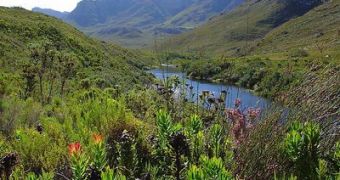In 1995, the Ministry of the Environment of South Africa launched the program "Working for the Water," aiming to eliminate the "foreign plants" by cleansing 20 million of hectares for returning water to the natives, both plants and humans.
Those supporting the program said the exotic species, imported or entered accidentally, consumed twice or thrice the amount of water used by local plants, menacing the table water level, already thin and deficient.
7% of the water sources of South Africa are considered to be consumed by foreign invaders, which impede the growth of local plant species, increasing the sources of fire and flooding, causing soil erosion and destroying the banks, filling water reservoirs and degrading water quality.
Of the total of 1,800 plant species of South Africa, which makes one of the seven geobotanical areas of the world, 29 species of the fynbos (South African heathland) are menaced by the invader plants. About 200 invading species are extremely aggressive, threatening the balance of the local ecosystems. Three of these species are the water hyacinth, the Spanish flag (Lantana camara) and Acacia cyclopis.
The program needed $241 million only in 2000, 94% of the money going directly to the eradication. Still, the experts consider that about $600 million would be necessary annually for winning the "war."
Anyway, the aim to return to the initial flora of South Africa is rather mythical than realistic. This type of programs did not manage a 100% removal of the exotic species in Australia, New Zealand or US.
And the botanical communities, by their nature, are never stable in their composition along the time, as the conquering of new spaces by new species is the condition of life propagation on Earth. Even the smallest and most remote islands are invaded in time by outside species, which reach them as adults, eggs, seeds or spores. Life exists because of its plasticity and capacity to occupy new habitats.

 14 DAY TRIAL //
14 DAY TRIAL //